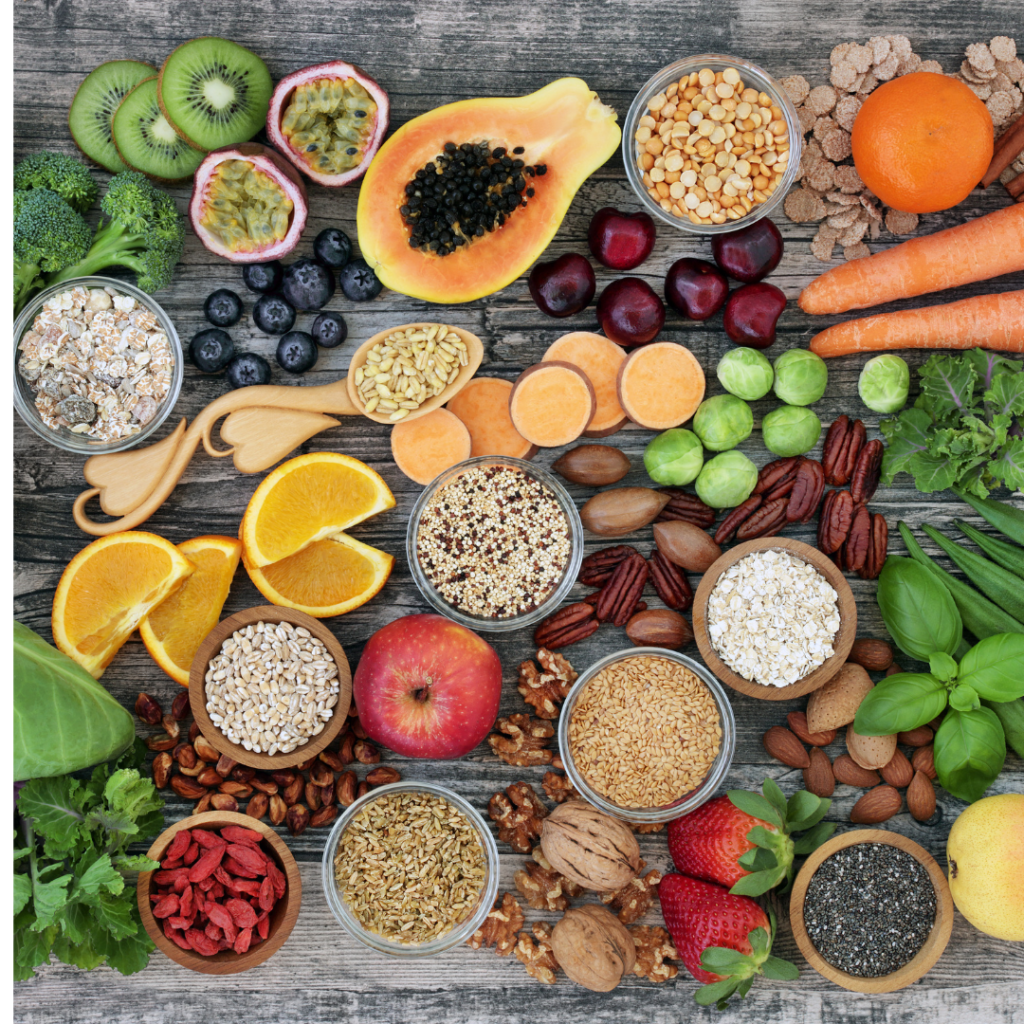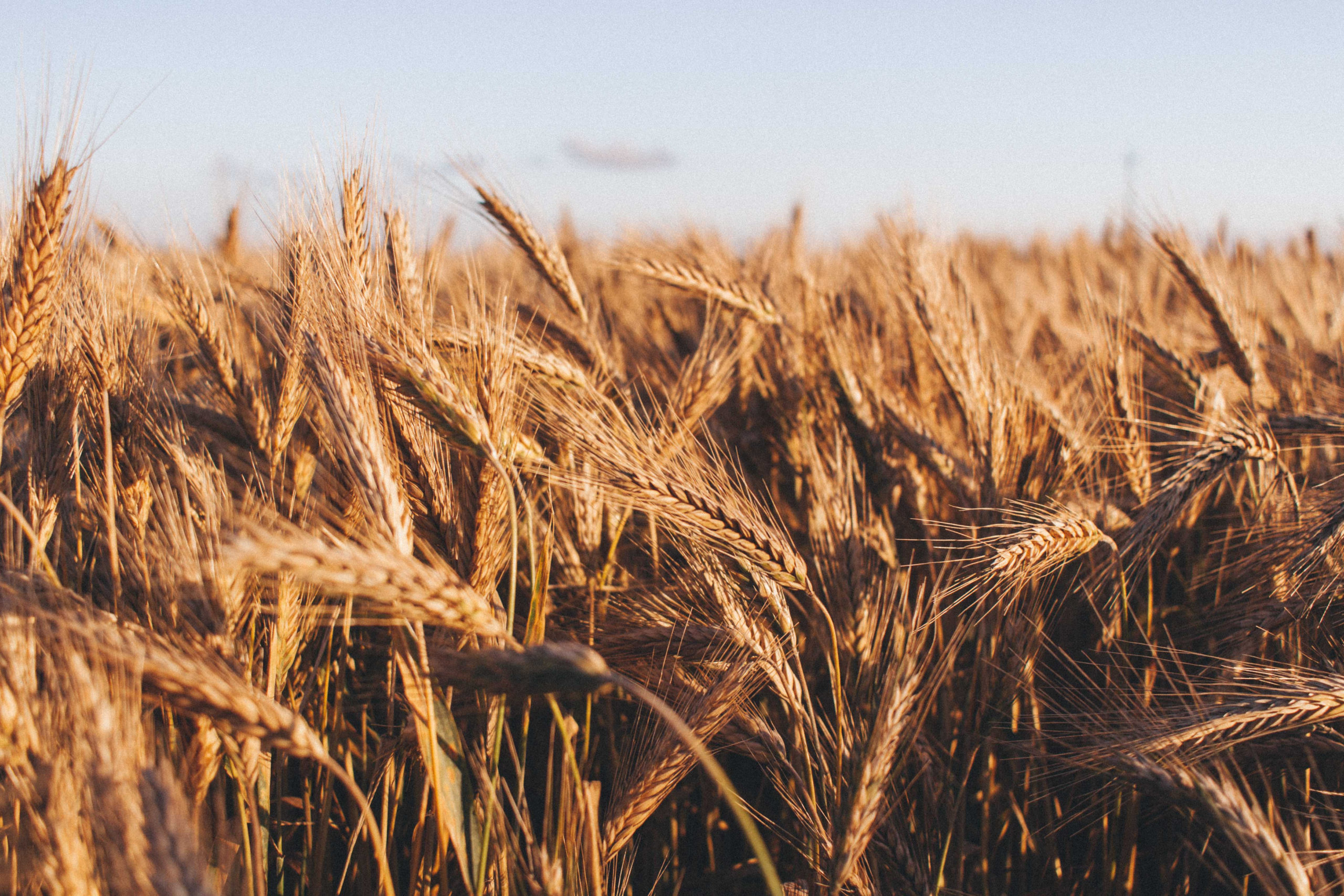What is Fiber?
Fiber Comes from plants- it is not naturally found in meat or animal products, such as eggs or milk. It is a type of carbohydrate, but unlike carbs, it is non-digestible and is not broken down into energy, but stays relatively intact as it passes through our digestive system. Fiber acts like a sponge. It soaks up moisture to help in the digestion of food. Fiber-rich foods have many benefits:
- Promote regularity
- Produce a feeling of satiety
- Help to lower cholesterol levels
- Help control blood sugars
- Decreases cancer risk
- Feed the friendly flora in our gut to help support digestion
There are two primary types of fiber; insoluble and soluble. Generally speaking, adults need 25-35 grams of fiber a day. Most Americans do not consume nearly enough fiber. Fiber not only keeps us feeling full, supports blood sugar regulation and a healthy heart, but is essential to support a healthy gut. Fiber is fermented by bacteria in our gut to create short chain fatty acids (SCFA) that serve as fuel for the cells in our colon.
Insoluble Fiber
Insoluble fiber is very important in the diet. As the name implies, insoluble fiber is not dissolvable. This property directly contributes to fiber’s role of promoting bowel regularity. Insoluble fiber also helps increase satiety. Some good sources of insoluble fiber include:
- Wheat bran, whole grains
- Brown rice, quinoa, buckwheat, whole grain pasta and bread
- Beans, lentils
- Avocado, berries, apples, pears
- Spinach, peas, radishes, turnips
Soluble Fiber
Soluble fiber also plays significant roles in health maintenance. Soluble fiber helps prolong stomach emptying time, which also allows increased satiety. Additionally, soluble fiber is critical in blood sugar regulation and cholesterol. Good sources of soluble fiber include:
- Oats, bran, barley
- Legumes and beans like pinto, navy, black, garbanzo, kidney and lentils
- Nuts and seeds like ground flax, chia, sunflower, almonds and walnuts
- Fruits and vegetables like peppers, oranges, apples, pears, figs and apricots
Tips for fitting in Fiber:
- Start your day off by choosing a high fiber breakfast like oatmeal, Shredded Wheat, cooked quinoa, bran muffins or buckwheat pancakes.
- Keep the skins on fruits and vegetables. Be sure to wash well before eating.
- Choose cereals that contain at least 5 grams of fiber per serving and 5 or less grams of sugar.
- Always read the ingredient list when choosing whole grain breads. What may appear to be whole grain may actually be enriched white flour with caramel coloring. The first ingredient should always read whole. Look for 100% whole grain wheat, rye, spelt, sprouted or whole grain. Stay away from those listing enriched or bleached flour as the first or second ingredient.
- Add nuts or beans to salads for an extra fiber boost
- Substitute whole grain pastas like spelt, einkorn or buckwheat for white pasta. Or try a bean flour pasta like garbanzo bean, edamame or black bean.
- Try quinoa, bulgur, buckwheat groats or barley in soups, salads and stir-fry.
- Mix dried fruits, nuts and whole grain cereals for a healthy, fiber rich snack instead of a bag of chips
- Try brown rice instead of white rice.
- Add psyllium husk, ground flax and chia seeds to smoothies
- Make your own granola!
| Food | Serving Size | Total Fiber (g) |
| Steel Cut Oats, cooked | ½ cup | 9 |
| Oat bran, cooked | ¾ cup | 4 |
| Pearled Barley, Cooked | 1 cup | 6 |
| Buckwheat groats | 1 cup | 5 |
| Shredded wheat | 1 cup | 6 |
| Apple with Skin | 1 small | 4 |
| Banana | 1small | 3 |
| Orange | 1 small | 3 |
| Pear | 1 small | 4 |
| Avocado | ½ medium | 6.5 |
| Baked yam with skin | 1 medium | 4 |
| Winter Squash | 1 cup | 5.5 |
| Spinach, raw | 2 cups | 3 |
| Broccoli, cooked fresh | 1 cup | 4.5 |
| Brussel sprouts, cooked | ½ cup | 4 |
| Kidney Beans | ½ cup | 7 |
| Lentils, cooked | ½ cup | 5 |
| Split peas, cooked | 1 cup | 8 |
| Tempeh | 4 oz | 12 |
IMPORTANT NOTE: If you increase your fiber intake be sure to increase you water intake as well to prevent stomach irritation and constipation. Also, add fiber gradually to diet.
High fiber recipes
Vegan Split Pea Soup
Ingredients:
16 oz dried green peas
6 cups water
1 tbsp extra virgin olive oil
1/4 tsp red pepper flakes (optional)
2 cloves fresh garlic, minced
2 carrots, diced
2 celery stalks, diced
1/2 cup onion, diced
2 tsp smoked paprika
1 tsp cumin
1/2 tsp turmeric
1 tsp sea salt (optional)
Freshly ground pepper
Directions:
- Heat oil in medium sauce pan. Add garlic, onion, carrots , celery and crushed red pepper. Sauté for about 3-5 minutes.
- Add, paprika, cumin and turmeric and sauté for another 2 minutes. Add peas and mix well.
- Add water, salt and pepper. Bring to a boil.
- Turn heat to low, cover half way and simmer for 35-40 minutes or until peas are cooked.
- Remove from heat. Season to taste.
Spinach Blender Muffins
Ingredients:
1/4 cup plant based milk of choice ( we like unsweetened almond or cashew) + 2 T. if needed
1/4 cup nut butter (we like Justin’s)
1/4 cup honey or other sweetener of choice
1 egg
4 T. ground flax seed
1 ripe banana
1 cup gluten free rolled oats
2 large handfuls fresh spinach
1 tsp. cinnamon
1/4 tsp. baking soda
Pinch salt
1 scoop protein powder of choice (optional)
Directions:
- Preheat oven to 350 degrees and grease a muffin tin with refined coconut oil
- Place all ingredients starting with the liquid into the blender
- Blend on high speed until completely smooth and batter forms
- Pour into muffin cups 3/4 of the way
- Bank for 20-25 minutes until slightly browned on top and set in the middle
- Let cool completely before removing from muffin tin
- Keep best in the refrigerator for up to a a week
Black Bean Hummus
Ingredients
1.5 cups cooked black beans or 1-15 oz can black beans, drained and wash
1/4 cup chopped onion
2-3 cloves garlic
3 tbsp fresh cilantro, mint, parsley or 1 tbsp each
2 tsp cumin
1 tsp coriander
1/2 tsp smoked paprika
Salt
Pepper
Juice of 2 limes
1 tbsp avocado oil
Directions
Combine in blender or food processor and serve with your favorite tortilla chips.
Enjoy!



